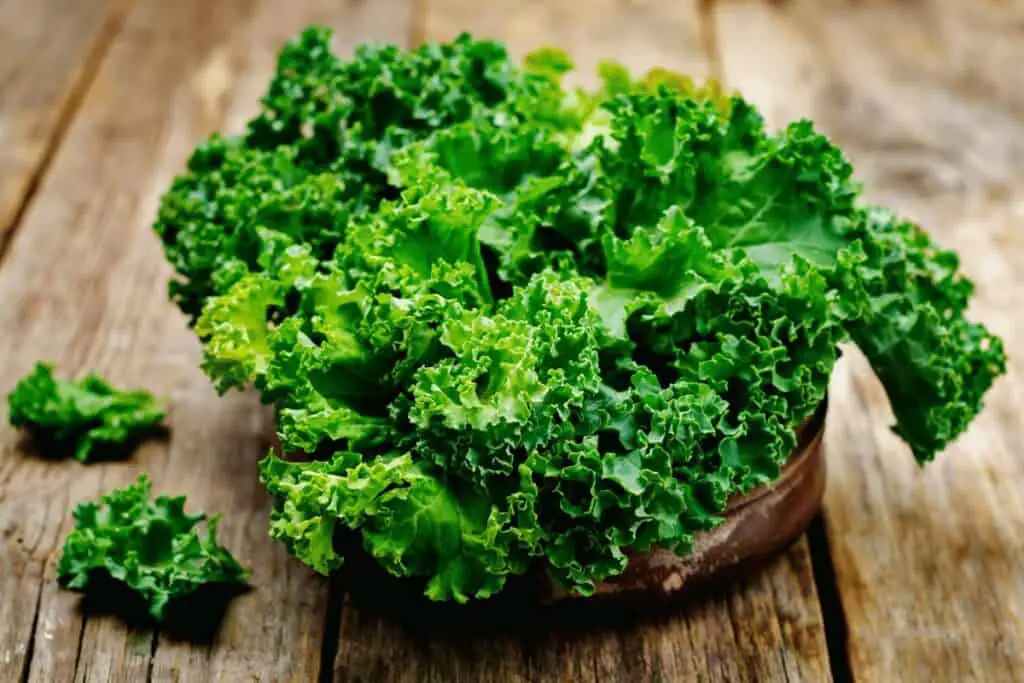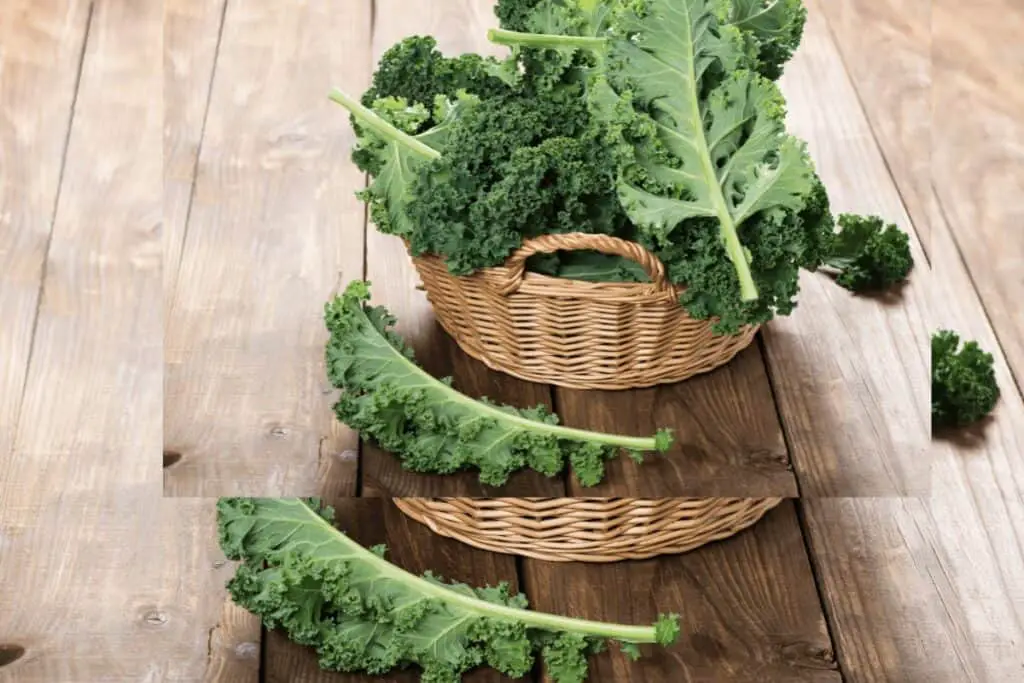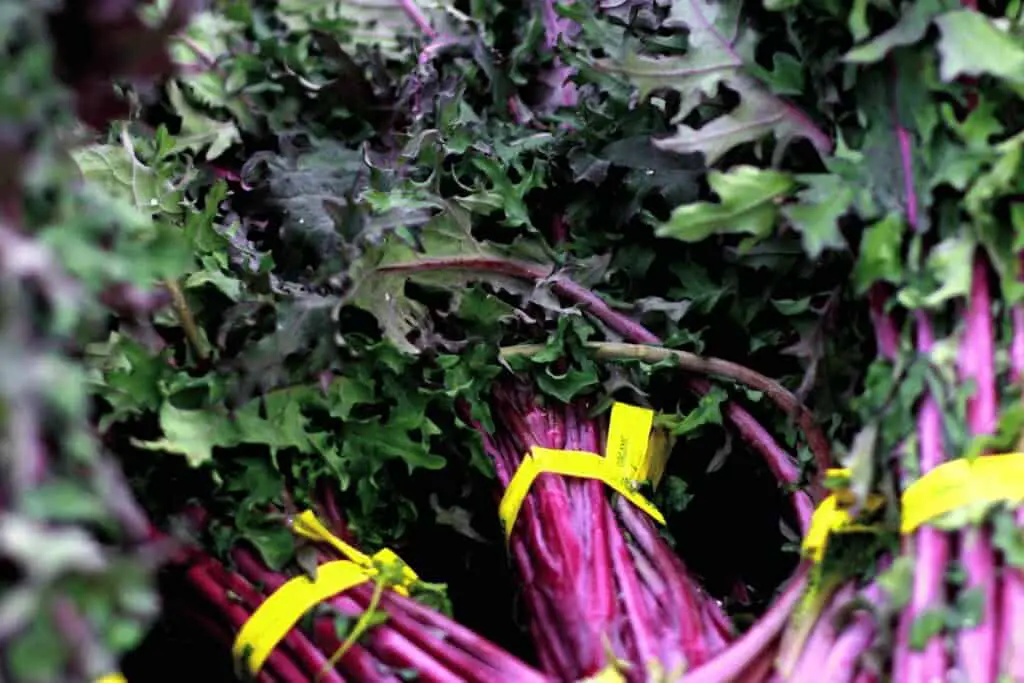If you’re a fan of kale, you may be familiar with several varieties of this leafy green vegetable. One variety that may stand out is Siberian kale, with its unique origin story and distinct characteristics. But how does Siberian kale compare to another type of kale known as Russian kale?
In the article, Is Siberian Kale the Same as Russian Kale? we’ll explore the similarities and differences between Siberian kale and Russian kale to help you understand these two types of kale better.
What Is Siberian Kale?

Siberian kale is a variety of kale that has a unique origin story and distinctive characteristics. This type of kale is a hardy, cold-tolerant biennial that is similar in appearance to other types of kale, but with a few notable differences. Siberian kale has flat, toothed leaves that can grow up to 20 inches long and 8 inches wide, making it one of the largest types of kale available.
It also has a slightly milder taste than other types of kale and is a popular choice for salads and smoothies.
The Origin of Siberian Kale
Siberian kale is believed to have originated in Siberia, a region of Russia known for its harsh climate and long, cold winters. According to [[1]], it’s thought that Siberian kale was crossed with Brassica nigra, a variety of black mustard, to produce other types of kale such as Red Russian kale.
Characteristics of Siberian Kale

Siberian kale is known for its unique characteristics, including:
- Flat, toothed leaves
- Large leaf size, up to 20 inches long and 8 inches wide
- Milder taste than other types of kale
- Hardy and cold-tolerant biennial
What Is Russian Kale?

Russian kale is another variety of kale that is popular among home gardeners and farmers alike. This type of kale is also known for its hardiness and cold tolerance, making it a popular choice for growing in cooler climates.
Russian kale has curly, blue-green leaves that are similar in appearance to other types of kale but with some differences.
The Origin of Russian Kale
Russian kale, also known as Russo-Siberian kale, is believed to have originated in Northern Europe and Northern Asia. According to [[2]], this variety of kale has been “shuffled back and forth across the globe” over the past century and is now grown in many parts of the world.
Characteristics of Russian Kale

Russian kale is known for its unique characteristics, including:
- Curly, blue-green leaves
- Smaller leaf size compared to Siberian kale
- Slightly bitter taste
- Hardy and cold-tolerant biennial
Red Russian Kale Seeds Organic

Organic Non-GMO Garden Vegetable Purple Veined Collard Green Leaf Lettuce Seed for 100 Seeds Season
- Blooms in about 90 days
- ASeeds are Non-GMO, easy to grow, and hand packed Seeds
- Great for bed borders and any hanging pots
- This is a favorite for inside growing
Dwarf Siberian Kale Seeds

Kale Seeds for Planting (Approx. 1000 Kale Seeds) Heirloom Non-GMO Seeds Vegetable Home Gardening
About this item
- Dwarf Siberian Improved kale is a variety of kale that is known for its compact size and hardiness.
- It is a cool-weather crop that is well suited to fall and early spring planting.
- Kale is a member of the brassica family, which includes other vegetables like broccoli and cauliflower.
- The kale has a slightly sweet and earthy flavor and a crisp texture that makes it a versatile ingredient in a variety of dishes
- It is an easy-to-grow vegetable that is well-suited for container gardens and small spaces.
Siberian Kale vs. Russian Kale: Similarities
Despite their differences in appearance and taste, Siberian kale and Russian kale share some similarities. Both types of kale are:
- Hardy and cold-tolerant biennials
- Nutritious and packed with vitamins and minerals
- Versatile and can be eaten raw or cooked in a variety of dishes
Siberian Kale vs. Russian Kale: Differences
Siberian Kale and Russian Kale are two varieties of kale that are often confused due to their similar names. However, they have several differences that set them apart from each other.
Siberian Kale, also known as Napus Kale or Russian Napus Kale, is a hardy, cold-tolerant plant that is believed to have originated in Siberia [2]. It has a slightly thinner and more tender texture compared to curly kale, which makes it more versatile in terms of usage, such as requiring less massaging when used in raw preparations and cooking more quickly [1].
On the other hand, Russian Kale, also known as Red Russian Kale, is a type of kale that is characterized by its deep red color and flat leaves with ruffled edges [1].
It is believed to have been developed by crossing Siberian Kale with Brassica nigra, a variety of black mustard [3].
Despite their differences, both Siberian and Russian Kales share similar nutritional profiles and health benefits. Both are rich in vitamins and minerals, including vitamins A, C, and K and contain antioxidants that may help reduce the risk of chronic diseases [3].
In summary, while Siberian Kale and Russian Kale share some similarities, they have several distinct differences that set them apart from each other.
Siberian Kale is thinner, more tender, and more versatile, while Russian Kale is characterized by its deep red color and ruffled edges. Both varieties, however, offer numerous health benefits and are worth exploring in the kitchen.
How to Cook Siberian and Russian Kale
Siberian kale and Russian kale are both members of the Brassica family and are known for their hardiness and cold resistance. When it comes to choosing which one to cook with, it ultimately comes down to personal preference.
In terms of cooking, both Siberian and Russian kale can be used in a variety of ways. For example, they can be sautéed, stir-fried, or used in salads. When cooking with Siberian kale, it is recommended to grind the meat through a large die to preserve the meat fibers and add broth for extra juiciness [1].
Meanwhile, Russian kale can be finely chopped and mixed with other vegetables and seasonings to make dumplings [2].
When sautéing kale, the cooking process is relatively straightforward for both Siberian and Russian varieties. For example, when cooking Siberian kale, it is recommended to cook it with raw onions or crushed ice for added juiciness [1].
Similarly, when cooking Russian kale, it can be sautéed with garlic and lemon juice for added flavor [3].
Overall, both Siberian and Russian kale offers a range of culinary possibilities and can be used in a variety of dishes. Ultimately, the choice between the two comes down to personal preference and the desired outcome of the dish.
Overview of Their Nutritional Value and Health Benefits
Siberian and Russian Kale are highly nutritious leafy vegetables that offer several health benefits. These vegetables are rich in antioxidants, vitamins, and minerals.
Nutritional Value of Siberian and Russian Kale
Both Siberian and Russian Kale is low in calories and high in nutrients. One cup of raw kale (20.6g) provides 7.2 calories, 0.6g of protein, 0.9g of carbohydrates, and 0.3g of fat. They are a great source of vitamins A, K, and C, as well as potassium and calcium [3].
Health Benefits of Siberian and Russian Kale
Siberian and Russian Kale offers several health benefits. They are rich in antioxidants, which help protect the body from harmful free radicals. They also contain fiber, which promotes digestion and helps regulate blood sugar levels [2]. Additionally, kale can help improve eye health, support weight management, and promote heart health [1].
Possible Side Effects of Siberian and Russian Kale
While Siberian and Russian Kale are highly nutritious, consuming large amounts of these vegetables may cause some side effects. Kale contains oxalates, which can interfere with calcium absorption and may lead to kidney stones in some individuals.
Moreover, kale contains goitrogens, which may affect thyroid function in some people. However, the levels of these compounds in kale are generally not high enough to cause any significant health problems, and they can be reduced by cooking or steaming [2].
In conclusion, Siberian and Russian Kale are highly nutritious vegetables that offer several health benefits. They are rich in antioxidants, vitamins, and minerals and can help improve eye health, support weight management, and promote heart health.
While consuming large amounts of kale may cause some side effects, these vegetables are generally safe and healthy when consumed in moderation.
FAQs
Q: What is another name for Russian kale?
A: Russian kale is also known as Red Russian kale and scarlet kale.[1]
Q: What does Siberian kale taste like?
A: Siberian kale has a sweet and tender taste, making it a great addition to salads when served raw.[3]
Q: What are the three types of kale?
A: The three most common types of kale are curly kale, Tuscan kale, and Red Russian kale.[2]
Q: How do you eat Siberian kale?
A: Siberian kale can be eaten raw in salads or cooked in a variety of ways, such as sautéed, steamed, or boiled.[3]
Q: Is Siberian kale good?
A: Siberian kale is a nutritious and delicious vegetable, high in vitamins and antioxidants, and has a sweet and tender taste.[3]
Q: What is the best-tasting kale variety?
A: The best-tasting kale variety can vary based on personal preferences, but some of the most popular ones are Red Russian kale, Lacinato (Tuscan) kale, and Baby kale.[1]
Q: What is the healthiest kale to eat?
A: All types of kale are highly nutritious and considered superfoods, but some of the healthiest kale varieties are Lacinato (Tuscan) kale, Red Russian kale, and curly kale.[1]
Q: What is the most popular kale to eat?
A: The most popular kale to eat can vary based on personal preferences and location, but some of the most commonly available and popular varieties are curly kale, Lacinato (Tuscan) kale, and Red Russian kale.[2]
Conclusion Is Siberian Kale the Same as Russian Kale?
In conclusion, Siberian kale and Russian kale are closely related and part of the same species [3]. They are both winter-hardy vegetables and grown for their edible leaves, which are rich in nutrients like fiber, vitamins A, C, and K, calcium, and antioxidants [1, 2].
While there may be some differences in terms of their origins and cultivation requirements, the two varieties are quite similar and can be used interchangeably in recipes that call for kale.




